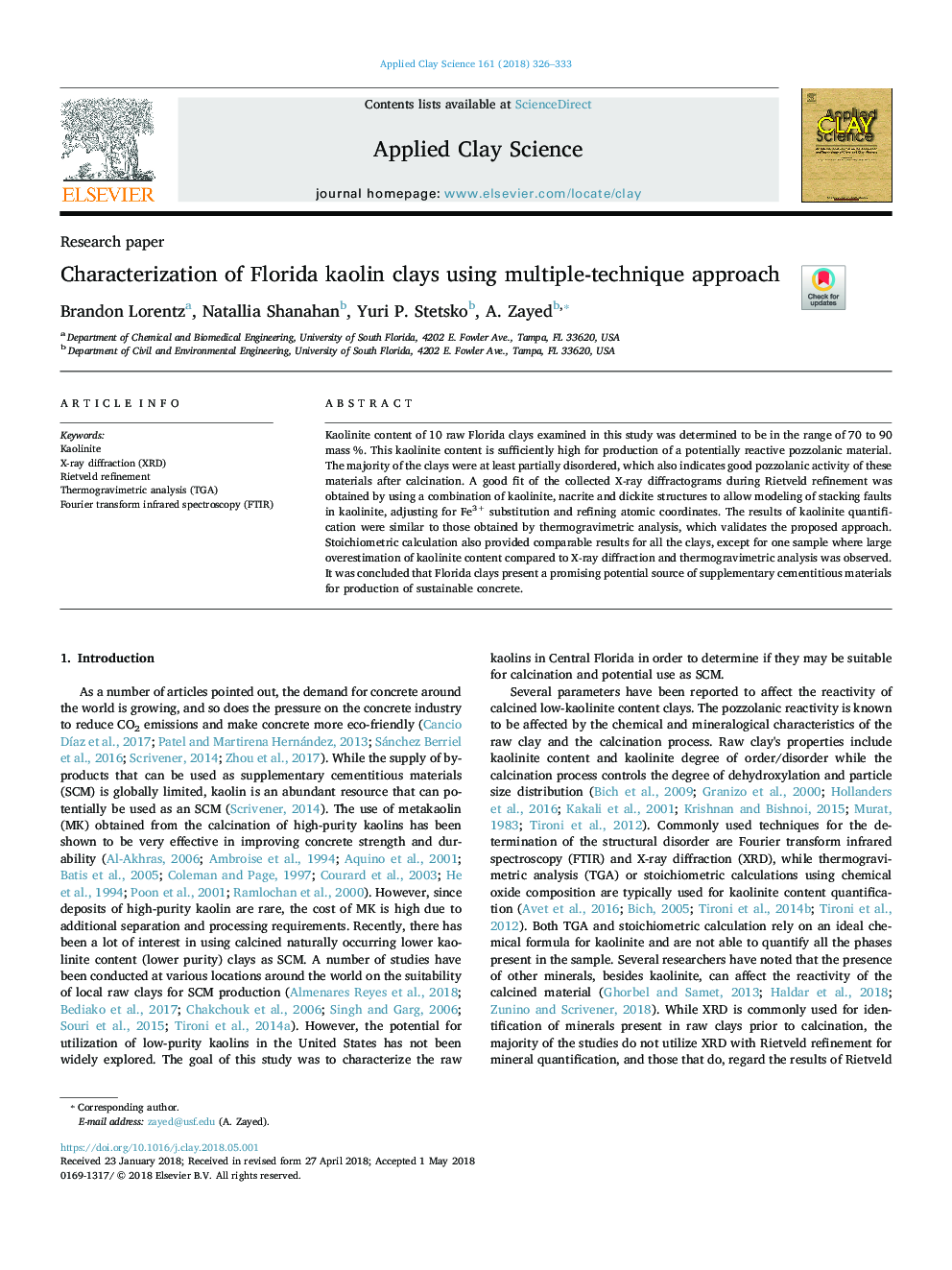| Article ID | Journal | Published Year | Pages | File Type |
|---|---|---|---|---|
| 8045826 | Applied Clay Science | 2018 | 8 Pages |
Abstract
Kaolinite content of 10 raw Florida clays examined in this study was determined to be in the range of 70 to 90 mass %. This kaolinite content is sufficiently high for production of a potentially reactive pozzolanic material. The majority of the clays were at least partially disordered, which also indicates good pozzolanic activity of these materials after calcination. A good fit of the collected X-ray diffractograms during Rietveld refinement was obtained by using a combination of kaolinite, nacrite and dickite structures to allow modeling of stacking faults in kaolinite, adjusting for Fe3+ substitution and refining atomic coordinates. The results of kaolinite quantification were similar to those obtained by thermogravimetric analysis, which validates the proposed approach. Stoichiometric calculation also provided comparable results for all the clays, except for one sample where large overestimation of kaolinite content compared to X-ray diffraction and thermogravimetric analysis was observed. It was concluded that Florida clays present a promising potential source of supplementary cementitious materials for production of sustainable concrete.
Keywords
Related Topics
Physical Sciences and Engineering
Earth and Planetary Sciences
Geochemistry and Petrology
Authors
Brandon Lorentz, Natallia Shanahan, Yuri P. Stetsko, A. Zayed,
